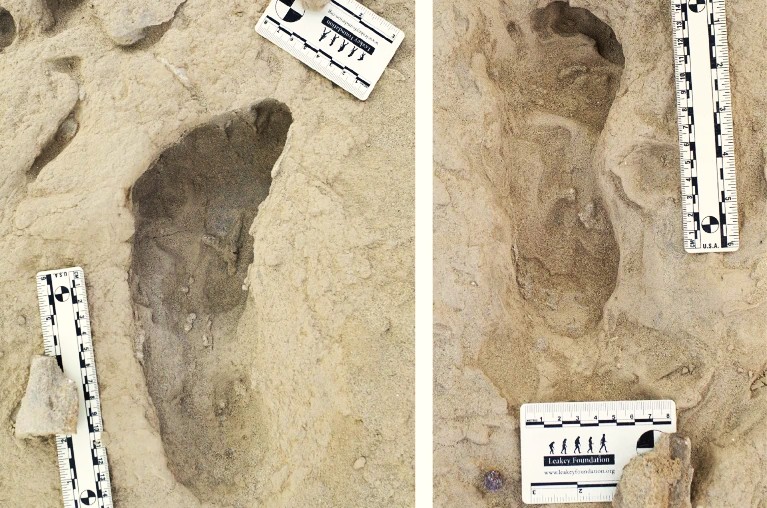New ancient footprints have been discovered around Lake Turkana area in the Northern parts of Kenya.
The newly found footprints, according to researchers, show at least two hominid species were walking through the submerged edge of a lake in the Turkana Basin in Kenya at the same time.
Scientists say this is the ‘First physical evidence of species coexistence!’
The discovery, from the renowned hominid fossil site of Koobi Fora provides the first physical evidence for the co-existence of multiple hominid lineages in the region dating back to about 1.5 million years ago, a study in Science reveals.
The researchers say that although multiple hominin species coexisted in eastern and southern Africa, little was known about the interspecific interactions of the species due to limitations of skeletal fossil record.
Excavating the full footprint surface and using photogrammetry to create three-dimension (3-D) models of the site for analysis, the researchers observed two different patterns on the same pedal imprints surface.
The trail stretched repeatedly across multiple sites in the Turkana Basin.
A co-author, Kevin Hatala, associate professor of biology at Chatham University, Pittsburgh, says the two different patterns of foot anatomy and locomotion, preserved alongside each other on the same footprint surface, are most likely to have been produced by two fossil human relatives.
He named the species as Homo erectus and Paranthropus boisei.
“These two species must have lived on the same immediate landscape at the same time, and they probably walked across this footprint surface within hours of each other,” Hatala told Nature Africa.
The author points out that this raises important questions about potential competition, and other aspects of interactions between hominin species.
The Turkana basin, in addition to being home of desert lakes, is described to be an outstanding laboratory for the study of plant and animal communities, as well as mammalian, molluscan and other fossil remains.
These have contributed more to the understanding of paleo-environments than any other sites on the continent, with the exception of Olduvai and Laetoli found within Ngorongoro in Northern Tanzania.

